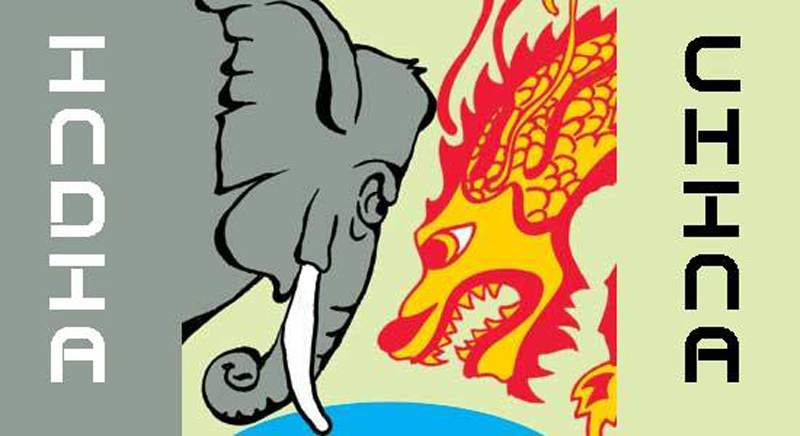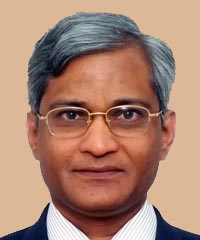 This article appeared in the Special Issue 2015 edition of the Tibetan Review.
This article appeared in the Special Issue 2015 edition of the Tibetan Review.

Prof. Srikanth Kondapalli, Centre for East Asian Studies, Chinese Division, JNU
My presentation is on Chinese foreign policy vis-à-vis India. I will take a few minutes to broadly operate the major policy options that China has visualized in the last few decades and what its implications or status are. In 1949 when the PRC was established and subsequently after its People’s Liberation Army marched into Tibet, we, for the first time in history, faced a Chinese military presence on our border. This necessitated a policy of looking at the “Minimalist Foreign Goals of China”, which was, from a Chinese point of view, related to Tibet. So, one of the aspects of China’s foreign policy vis-à-vis India is in relation to Tibet. Professor Dawa Norbu had written extensively on this aspect of Tibet and related issues and this is again an area of interest for discussion today.
Over the period of December 1949 – April 1950, when negotiations took place between two officials of India and China, the main focus was on Taiwan rather than Tibet. This was partly because the PLA had not yet marched into Tibet and Tibet was not integrated with mainland China. So the discussions between the officials on the two sides were related to what they called the “Taiwan model”. The Taiwan model suggested what subsequently came to be called as the “One China Policy”, which is the position adopted by the Indian Government in April 1950 when they established diplomatic relations with the PRC. The PRC was recognized by 1950 by mostly socialist countries which were basically part of the Soviet Union bloc countries. Most of them had the One China Policy as suggested by the PRC.
India, Pakistan and Burma were the three main non-socialist countries which discussed about the One China policy. India was the first one to declare the One China policy which basically did not include Tibet at that time but only Taiwan. Between 1950 and 1954 the Tibet issue did come up as a discussion between India and China. In 1954, during the Panchsheel Principles Declaration, the issue of Tibet was mentioned in an indirect manner, rather than in a direct manner, in trade related issues between India and China. Whichever way you look at it, the focus of Chinese foreign policy in the 1950s and subsequently was on what came subsequently to be called China’s “Core Interests”. Tibet and Taiwan were identified as core interests and in May 2009 the then State Councilor Dai Bingguo elaborated for the first time what exactly those core interests were: he mentioned various issues, including Tibet, Taiwan, the territorial integrity, and sovereignty. He also mentioned communist party’s control as a part of the core interest in addition to the ideological autonomy that China had over a period of time. Between 1950s and roughly about 2009, the core interests were observed but not yet in an explicit manner.
In 2009 itself, the core interests list was expanded to include the South China Sea. In 2010, the “Sankaku islands”, which the Chinese call the “Diaoyutai islands”, was also included as a core interest. So the core interests were a kind of dynamic expression in Chinese foreign policy which kept changing its goalpost from time to time. This is the background of China’s foreign policy vis-à-vis India concerning the subject of core interests.
In 2005, official documents of China started depicting Arunachal Pradesh as Southern Tibet. In other words, the core interests vis-à-vis the issue of Tibet was expanded to include Arunachal Pradesh as Southern Tibet, which was soon after Prime Minister Vajpayee’s visit. The Chinese started informally talking about it from 1986, but from 2003-04 they started talking about Arunachal Pradesh as southern Tibet. So the idea is that Tibet is a core interest, that Southern Tibet should also then become a part of core interest. This is the context for the minimalist foreign policy goals of China vis-à-vis India.
The second aspect is “Maximalist Goals” of the PRC. These goals say that by 2020 China should become a “Xiaokang Shehui”, or a well off society. The maximalist goals would include economic issues, trade related issues, investment related issues – issues which would enhance the prosperity of China. So the second aspect of China’s foreign policy is the economic well being of the people of China which has implications for trade, investment, markets and various other related issues. These are the two aspects that I think we need to keep in mind when we discuss the Chinese foreign policy vis-à-vis India.
The overall Chinese foreign policy we need to see should be in the context of the relationship between the United States and the former Soviet Union. Chinese foreign policies always tack down with the existing superpowers rather than with regional powers in Asia. This is one peculiarity about Chinese foreign policy: Chinese foreign policy from the 1940s looked at China’s relations vis-à-vis the superpowers, not in relation to regional or Asian powers. In 1950 China adopted the policy of “Leaning to One Side”, namely towards the Soviet Union, and there was hardly any role in it for India or South Asia as a whole. In other words the Chinese foreign policy’s main objectives at that time looked at the prospect of building relations with the then Soviet Union. But problems developed in their bilateral relations following the eruption of Sino-soviet ideological debates and by 1960 this spilled over into the international domain. This was the context in which Nixon’s visit to China took place in 1972.
The focus on the superpowers meant that all other countries, all other regions, were marginal in Chinese foreign policy relations except on the readjustments it made in the 1950s. For example, the concept of “Panchsheel”, or the Five Principles of Peaceful Coexistence, was initiated by Zhou Enlai, not Nehru, in 1954 and was meant to address the issue of “How to Cushion China” in the neighborhood. That was the major policy debate in China at that time. In other words, leaning towards Soviet Union did create conditions for China’s alienation from the rest of Asia. Hardly any country recognized the PRC at that time. So Zhou Enlai made this midcourse correction to the leaning to one side policy, suggesting the five principles of peaceful coexistence for an Asian good neighbourhood. That was how the “Good Neighborliness Policy” was initiated.
However, in the 1960s, Chinese foreign policy almost forgot the concept of good neighbourliness policy. Instead, it focused mainly on the third world countries. So, overall, India has been a marginal player in the overall policy direction of China. We should keep that in mind when we discuss the Chinese foreign policy vis-à-vis India.
Does that mean India was hardly a part of the Chinese foreign policy debate? No, it does not mean that. What I want to say here is that it has been a relatively marginal issue in the overall discourse of Chinese foreign policy. In fact, the entire South Asia was marginal, except in terms of striking a balance between Pakistan and India from the 1960s onwards. This then is the main context for discussing the Chinese foreign policy vis-à-vis India.
Within South Asia China followed what is called – and this is not a consistent policy – “support the small, counter the big” in south Asia. This meant that there was a certain amount of balancing that emerged in China’s policy between, say, Pakistan and India and that has been a consistent policy. To understand this, look at Chinese arms exports, Chinese aid packages across the globe and in South Asia; this has been the largest for the Pakistan side. So, pursuing a balance of power became a major motive of Chinese foreign policy vis-à-vis India.
Having said that there is also the contradictory line that Jiang Zemin took in 1996 in a speech in the Pakistani senate, where he said all South Asian countries were important for China. He said “all South Asia countries”, meaning thereby that the policy of balance of power would be revised. But we have not actually seen any major concrete follow-up of that policy because the Chinese balancing policy went on even after the 1996 speech. This was despite China’s realization that India could contribute to China’s rise in terms of investments, markets, resources and in terms of relations with the then superpowers or in the current uni-polar moment. In other words, the Chinese foreign policy goals has kept on changing, but with the main aspect of good neighbourliness policy which was implemented in certain phases and then the balance of power approach towards this region. So, we have to see Chinese foreign policy vis-à-vis south Asia and towards India in their different aspects.
If you look at the number of visits Chinese military officers have undertaken in South Asia, we realize that nearly 40-50% were to Pakistan. Aid also was mainly towards Pakistan or to other south Asian countries rather than, say, India. So we see the balance of power being consistently forwarded in this context. Now there are new developments which the Chinese foreign policy has to factor in – it has to readjust towards the South Asian region in general as well as India specifically. That is because the Indian GDP growth rates have kept on increasing, so much so that it has impacted China’s depiction of the concept of India in the South Asia region. Most text books in China say India is a major country in South Asia. I did not see any Indian scholar, or Indian official say China is a major country in East Asia. Also, in most of the Indian official statements, China is described as an important neighbour or an important power in the world.
Also, till about the 1990s, Chinese official documents mentioned India as a part of South Asia; today, however, it is talking about India’s ambitions to become a global power. Of course the civilian discourse in China is different from the military discourse there. The civilian discourse looks at readjustments along with balance of power strategy. However the military assessment in China, which also has some influence on foreign policy, suggests that India is planning to become a global power. So the policy option for it is to restrict that global ambition by a balance of power approach. Secondly, India is becoming hegemonic power in South Asia. So China’s policy option again is to support the small entrants and revive the policy of supporting the small to counter the big. The third assessment in the Chinese military is that the Indian navy is becoming very powerful and it needs to be countered as a policy option.
As you all know, till last week, China had sent 20 naval combat jets to the Indian Ocean region. Of course, their main purpose was to counter piracy related issues in the Gulf of Aden and other areas. But one of the policy options was also to come in a major way to the Indian Ocean region as a kind of balancing India. Of course, there are legitimate interests for China in the Indian Ocean region with regard to energy, trade, and so on. Yet this is also a background for the Chinese military assessment. The military is a major constituent in the entire decision making process of China. In fact, in India too, the army and the armed forces are a major constituent in decision making process. For example, the vice chief of the army staff is a member of the China Study Group, which is one of the most important decision making body in India vis-à-vis China.
Chinese military did have a role recently in deciding the foreign policy vis-à-vis other countries, including Indonesia. So this is the broad context for the Chinese foreign policy vis-à-vis South Asia. If the core interests have to be protected, then Tibet is one very important issue that China looks at in a focused manner. So any issue related to Tibet remains on its focus. This is the context underlying the understandings reached between the Indian and Chinese governments, which included obviously the 1954 trade agreement as well as the 1988 and 2003 Indian official pronouncements that Tibet is part of China. Secondly, from 1988, India has declared that Tibet is an autonomous part of China, leading to an emphasis on the autonomy portion, meaning that it is related to educational, religious, culture and so on so forth of autonomic relationships.
So at the official level we have seen the India government suggesting this while at another level it has stated that Tibetans will not undertake political activities that are anti-China in nature. This is one understanding between Indian and Chinese governments on the Tibet issue. So we have seen that as a result of this there are some restriction on the Tibetan movement in India in relation to political activities and other matters.
But we have also seen some changes in the Indian foreign policy. For example, last September, when president Xi Jinping visited India, we have seen Tibetan protestors very close to the Hyderabad House in New Delhi where all the negotiations were happening. This was a change in Indian position following the march 14, 2008 protests in Lhasa and subsequently after the Beijing Olympics in 2008 and the 140-odd self-immolations that were committed by Tibetans. So there have been some changes in the Indian foreign policy, which is in response to changes in Chinese foreign policy vis-à-vis the Kashmir issue. So it appears that the Indian side is matching those revisions in China’s foreign policy vis-à-vis Tibet. I will not go into the details of it, I will stick to the issue of the core interests as well as the maximal interests.
With regard to the focus now on the maximalist interests, China is putting forward its twenty first century strategic ideas which include the Silk Road strategy, building continental and maritime security which they have put across in the AIIB (Asian Infrastructure Investment Bank) as well as at the CICA summit (Conference on Interaction and Confidence Building Measures in Asia) which was held in May 2014 when it was stated that the Asian security belongs to Asians. So these concepts have been coming up in a more concerted way in the last one and half years, from 2013 onwards, which indicates that today China’s foreign policy goals are undergoing a major transformation, which again have implications on the way China conducts its foreign policy towards India.
What are the indicators for this? Well, the indicators are that in the last two decades we have seen the western development campaign, we have seen the Chinese outlays on the infrastructure projects which are claimed to be good for India as well. However, these are all dual-use logistics and dual-use infrastructure facilities. In 1959 the PLA (People’s Liberation Army) marched into Tibet and came knocking at India’s doors. Today, the infrastructure projects are knocking deeper inside the Indian doors. So this is the major change that has happened after the western development campaign was unleashed in China’s Ninth Five-Year Plan onwards. There are also several other proposals that China had made, including the FTA with Pakistan, which it implemented from 2006. And last year they wanted to come through with the FTA with Sri Lanka which, however, could not be concluded due to the change in government in Sri Lanka. Nevertheless, that proposal is still on. Another feature of China’s foreign policy is related to its counter-terrorism imperatives and at the multilateral level it also intends to join the SAARC process (South Asian Association for Regional Cooperation). Overall, as a package, I would suggest that these core interests as well as these maximalist interests influence China’s foreign policy vis-à-vis India.






Very detailed study showing significance of Tibet in regards to Chinese policy viz a viz India.